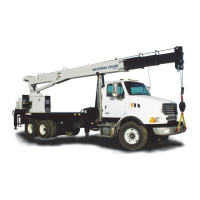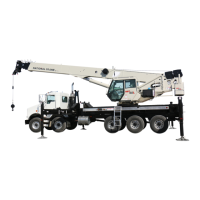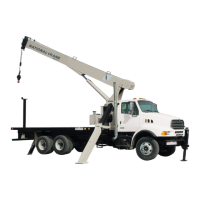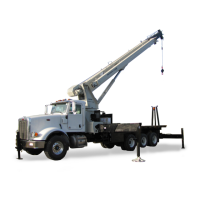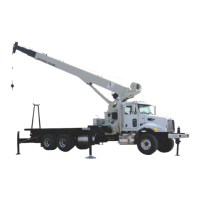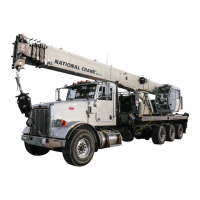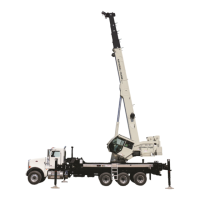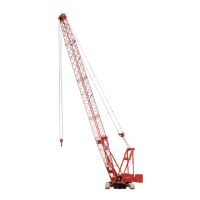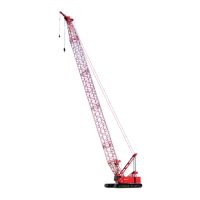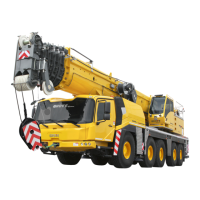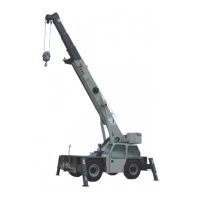9-18 Published 08/16/19 Control # 112-05
CRANE INSTALLATION 500E2 SERVICE MANUAL
TRUCK PREPARATION
Plan installation completely before any work is done. Plan
the location of the crane for the final front and rear axle
weights and boom overhang. Check final weight (see
Counterweighting Section to verify that final truck weight with
crane, reinforcement, counterweight and options such as jib,
etc. complies with the appropriate laws).
Welding Precautions
• Sensitive truck computer system and crane's RCL or jib
load limiting device computer system components may
be damaged by welding on the truck or crane. The
following precautions should be taken:
• Disconnect truck battery cables (positive and negative)
• Attach welding ground lead as close as possible to area
to be welded.
• Remove the jib from the crane before welding on the
crane or remove the jib sheave case assembly from the
jib before welding on the jib.
POSITIONING CRANE ON TRUCK
The final user of the crane must be aware of all state axle
and length laws in force at the time of crane mounting and
position the crane on the truck accordingly. Following are
items which must be considered.
1. Overall Length: Most states have a maximum straight
truck length limit of 40 feet (12.19 m). Using too long a
WB truck could cause the unit to exceed this limit.
2. Axle Weights: All states allow 20,000 lb (9072 kg) single
axle weight and 34,000 lb (15,422 kg) tandem axle
weights on primary roads, however, some states restrict
axle weight to less on secondary roads or at certain
times throughout the year. Be aware of your state's axle
laws and the roads the machine will operate on for
weight restrictions due to secondary roads, bridges,
winter driving conditions, etc.
3. Overhang: The most restrictive overhang laws call for a
maximum of 3 feet (0.91 m) in front of the truck. Many
states have a maximum of 4 feet (122 cm) overhang in
back of the truck. Check on your state requirements.
4. Federal Bridge Law: The Federal Bridge Law in effect
currently states that in order to carry 54,000 pounds
(24,494 kg) on a three axle truck, the extremes of any
group of axles must be at least 23.5 feet (7.16 m) apart.
This equates to a truck with a wheelbase of at least 258
inches (655 cm) with a minimum length of 24 inches
(60.96 cm) from the center of tandems to the center of
the rear axle.
PTO INSTALLATION
Select the PTO according to the PTO Selection pages shown
earlier in this section. PTO's are not furnished by the factory.
Hydraulic Pump Installation
1. Install the PTO and PTO shifting mechanism according
to the PTO manufacturer's instructions. If PTO has a
reverse gear, it must be blocked out. Pump must not run
backwards.
2. If PTO integral mount flanges are to be used, the pump
can be mounted directly to the PTO. Be sure adequate
clearance exists for this type of pump mount.
Sometimes the pump is powered through a drive line
with the pump located no more than 42 inches (107 cm)
from the PTO. The drive line should not exceed a 7°
angle. The drive line U-joint yokes on both ends of the
drive shaft must be parallel with each other. Drive lines
should be sized so they can safely carry the maximum
pump horsepower requirements. See “PTO Selection”
pages. Drive lines are not furnished by the factory.
3. Plan the location of the pump mounting bracket and
drive line, if used, so that ample clearance is maintained
between pump and truck drive shaft or exhaust system.
Pump should be situated so that hydraulic lines can be
connected without sharp bends especially the large
suction line from the reservoir. Pump mounting brackets
may be attached to existing frame crossmembers or a 6
inch (15 cm) channel crossmember can be made and
installed.
4. Install pump mounting bracket (driveline driven pumps
only) securely to the truck frame. Attach pump to pump
mounting plate or directly to the PTO using capscrews
provided.
a. Install the pump support bar at the rear of the pump
and bolt or weld the upper end to a crossmember if
the pump is driven by a driveline.
b. For a direct mounted PTO bolt to transmission.
c. The rear of the pump must be supported regardless
of the mounting method.
5. The splines of the pump shaft and the drive coupling
need Lubrication. If the gearbox is a wet drive then no
grease is required because the gearbox oil will lubricate
the splines. If the gearbox coupling is sealed then the
splines needs to be greased with Heavy Lithium Grease
covering all the Splines
CAUTION
To avoid pump failure, do not turn the pump in the
opposite direction of the indicating arrow on the pump
housing.

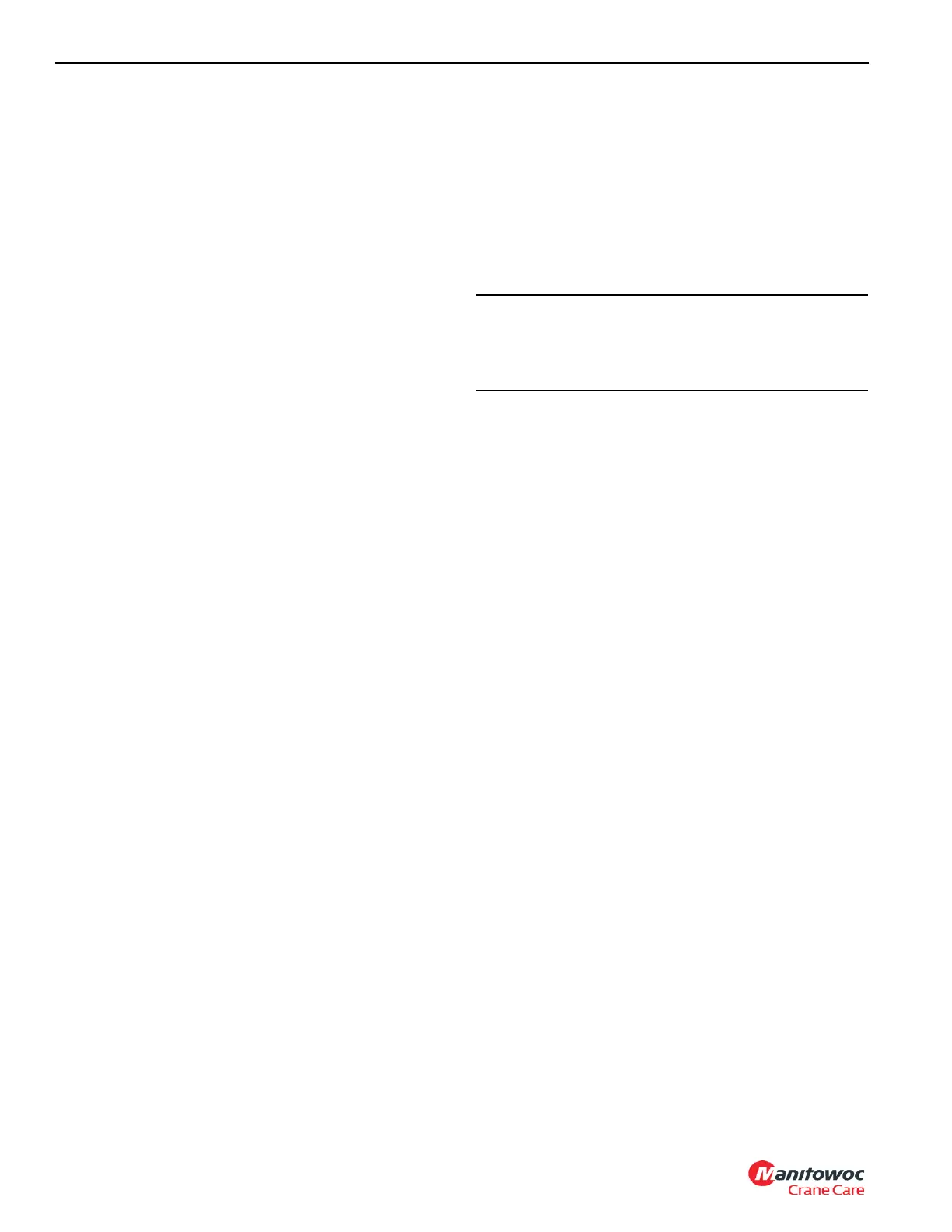